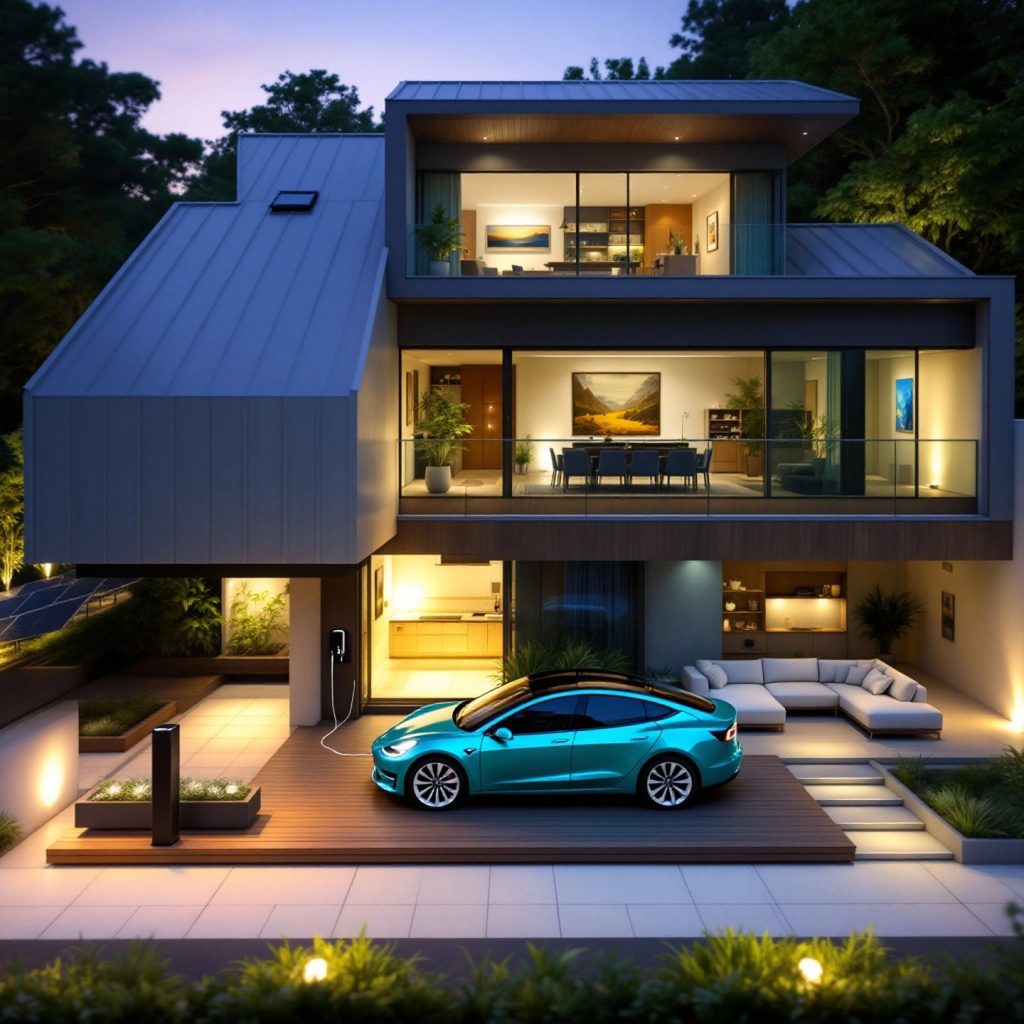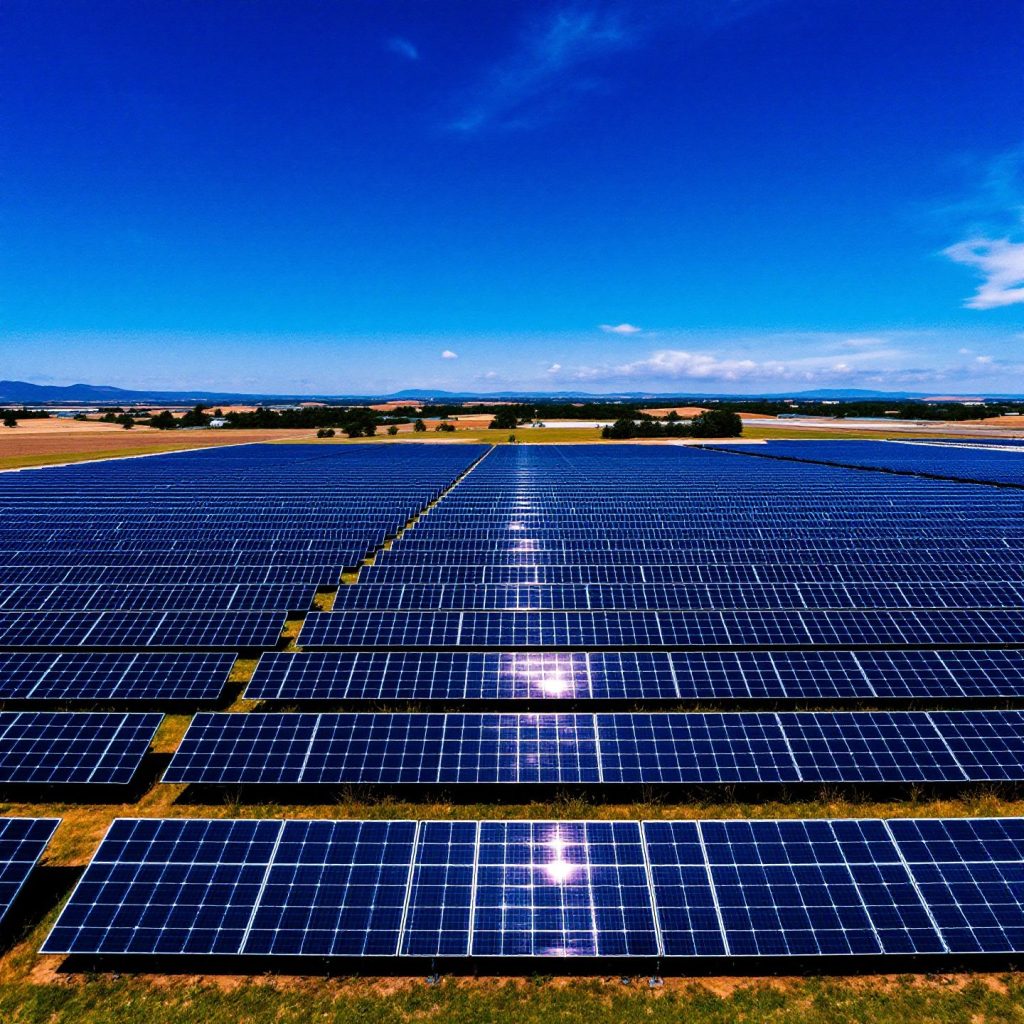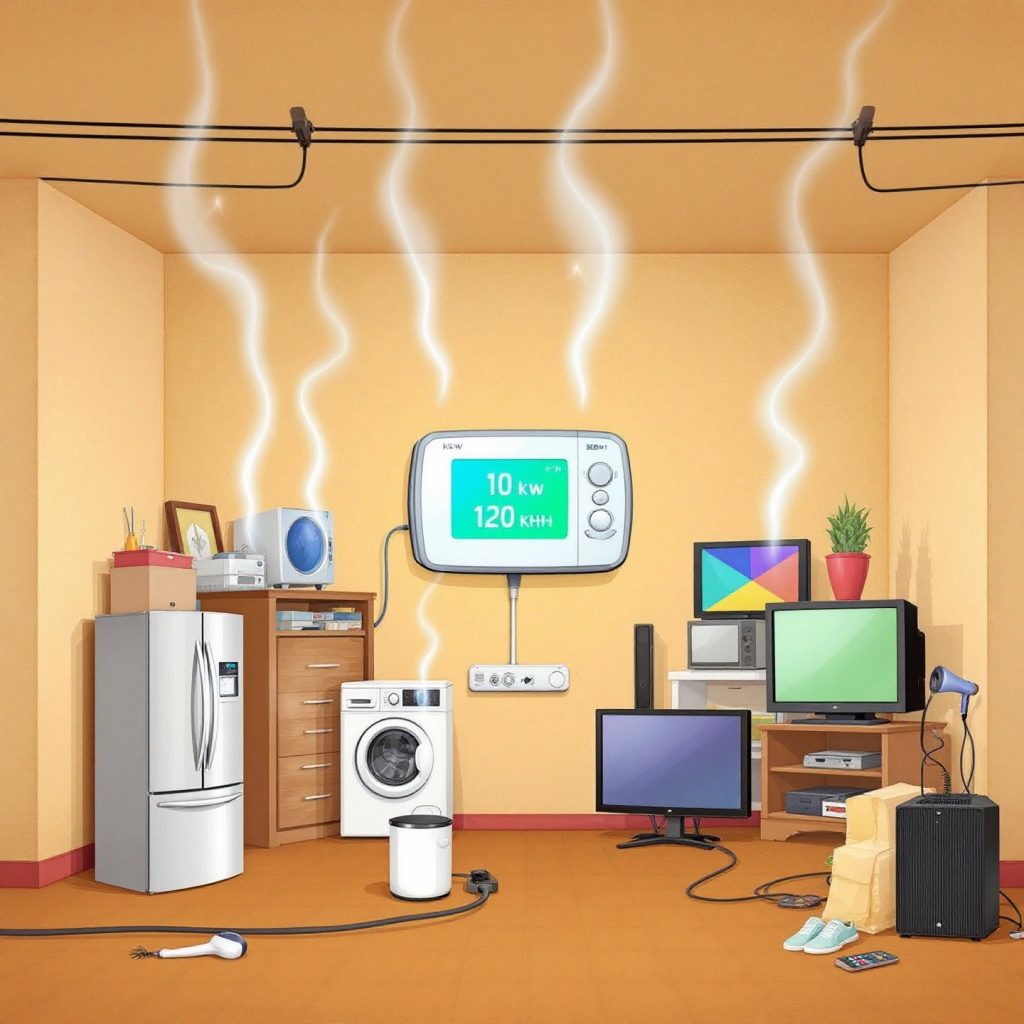Introduction to 12 Volt Lights
In today’s world, where energy efficiency and versatility are paramount, 12 volt lights have emerged as a popular lighting solution in both residential and automotive settings. But what exactly makes these lights so appealing? Imagine transforming your living space or vehicle interior into a well-lit, energy-efficient haven without the hefty electricity bills. This is where 12 volt lights shine—literally and figuratively.
One of the primary reasons for the growing popularity of 12 volt lights is their energy-efficient nature. Unlike traditional lighting systems that operate on higher voltages, 12 volt lights consume significantly less power, which translates into reduced energy costs and a smaller carbon footprint. This makes them an ideal choice for environmentally conscious consumers looking to reduce their energy consumption without sacrificing quality lighting.
Moreover, 12 volt lights offer remarkable versatility. They are compatible with a wide range of power sources, including solar panels and batteries, making them perfect for off-grid applications. This adaptability extends their use beyond the home, finding a place in automotive lighting, where they are used for everything from interior lighting to headlights.
In residential settings, these lights are often used in gardens and outdoor spaces, providing safe and efficient illumination. According to OutdoorLights Store , 12 volt lights are preferred in gardens due to their low power consumption and safety around plants and pets.
As we delve deeper into this guide, we’ll explore various applications of 12 volt lights, discuss maintenance strategies, and provide tips for optimizing your lighting setups. Whether you’re looking to enhance your home ambiance or improve your vehicle’s lighting efficiency, understanding the benefits and applications of 12 volt lights is the first step towards a brighter, more efficient future.
Understanding the Basics of 12 Volt Lighting
If you’re new to the world of 12 volt lighting, you might be wondering how it differs from standard lighting systems. At its core, 12 volt lighting operates on a lower voltage compared to traditional 120 volt systems, which makes it inherently safer and more energy efficient. But let’s break it down further.
Voltage Requirements and Energy Consumption
12 volt lighting systems require a transformer to step down the voltage from the standard household current to 12 volts, which is the optimal voltage for these lights. This lower voltage means the lights use less power, translating to reduced energy consumption and lower electricity bills. It’s a win-win for both your wallet and the environment.
Here’s a quick look at some of the key benefits of 12 volt lighting:
- Lower Power Consumption: Uses significantly less electricity, making it cost-effective and eco-friendly.
- Compatibility with Solar Systems: Easily integrates with solar panels, allowing for sustainable energy solutions.
- Enhanced Safety: Reduced risk of electrical hazards due to lower voltage.
- Versatility: Suitable for both indoor and outdoor applications, including gardens, pathways, and automotive lighting.
Safe Installation Practices
When installing 12 volt lights, it’s crucial to follow safe installation practices to ensure optimal performance and longevity. Here are some essential tips:
- Plan Your Layout: Sketch out your lighting design, considering the placement of fixtures and the necessary components like transformers and cables.
- Use Proper Connectors: Utilize waterproof connectors and enclosures for outdoor installations to prevent moisture ingress and potential short circuits.
- Calculate Voltage Drop: Be aware of voltage drop, which can occur over long cable runs. Use thicker cables or additional power supply points to mitigate this issue.
- Adhere to Manufacturer Guidelines: Follow the installation guidelines provided by the manufacturer to avoid warranty voids and ensure safety.
By understanding these basics, you’ll be better equipped to implement 12 volt lighting systems that are both efficient and safe. As we move forward, we’ll explore the various types of 12 volt bulbs available and how to choose the best options for your home or vehicle.
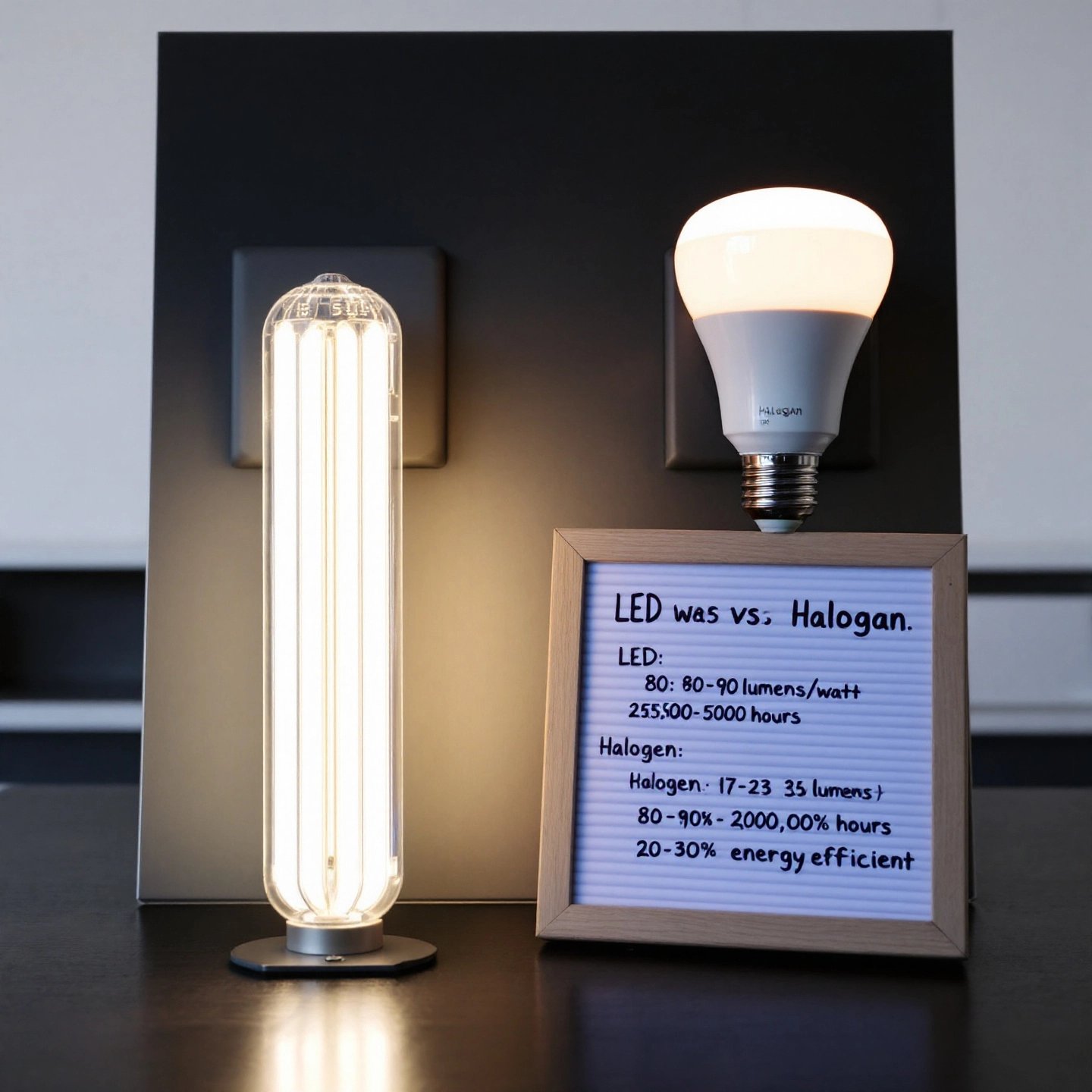
Comparing Bulb Options for Efficient Home Use
When it comes to selecting the right 12 volt light bulbs for residential use, the choices can be quite varied, each offering distinct benefits and trade-offs. The two primary types of 12 volt bulbs you’ll encounter are LED and halogen, each with its own set of characteristics that make them suitable for different applications. Let’s delve into these options to help you make an informed decision.
LED vs. Halogen: A Comparative Analysis
LED (Light Emitting Diode) bulbs have become the go-to choice for many homeowners due to their impressive energy efficiency and longevity. Unlike traditional bulbs, LEDs produce light by passing electricity through a semiconductor, which means they consume significantly less power and emit less heat. This is a stark contrast to halogen bulbs, which operate at higher temperatures and are less energy efficient.
| Feature | LED Bulbs | Halogen Bulbs |
|---|---|---|
| Wattage | 6-10 watts | 20-50 watts |
| Brightness | 450-800 lumens | 300-700 lumens |
| Lifespan | Up to 50,000 hours | 1,000-2,000 hours |
| Heat Emission | Low | High |
| Cost Efficiency | High (long-term savings) | Moderate (higher energy costs) |
As illustrated, LED bulbs offer superior energy savings and longevity, making them an excellent choice for those looking to reduce their carbon footprint and electricity bills. They are particularly advantageous in settings where lights are used frequently, such as in kitchens or living rooms.
Choosing the Right 12 Volt Light Fixtures
When selecting 12 volt light fixtures, consider the specific needs of your space. LED fixtures are available in a wide range of styles and are often compatible with dimmers, allowing for customizable lighting solutions. They are also ideal for use in solar-powered setups, thanks to their low power consumption.
Halogen bulbs, while less efficient, can still be useful in certain scenarios. Their ability to produce a warm, natural light makes them suitable for accent lighting or areas where a bit of extra heat might be beneficial, such as in outdoor settings during cooler months.
Ultimately, the choice between LED and halogen bulbs will depend on your specific requirements and preferences. By understanding the pros and cons of each, you’ll be better equipped to create an efficient and effective lighting setup for your home. In the next section, we’ll explore how these lighting options can be creatively applied for decorative purposes, enhancing both indoor and outdoor spaces.
Exploring Festive and Strip Lighting Innovations
Imagine transforming your home or outdoor space into a vibrant, festive wonderland with the simple addition of 12 volt LED strip lights. These versatile lighting solutions have gained immense popularity for their ability to create stunning visual effects, both indoors and outdoors. Whether you’re planning a holiday celebration or simply want to enhance your living space, 12 volt LED lights offer a range of decorative possibilities.
Creative Indoor and Outdoor Applications
12 volt LED strip lights are perfect for adding a touch of magic to any setting. Indoors, they can be used under cabinets, along staircases, or around mirrors to create ambient lighting that enhances the mood and aesthetic of your home. Outdoors, they can illuminate pathways, highlight architectural features, or wrap around trees and shrubs for a dazzling effect during festive occasions.
For those looking to make a statement, consider using color-changing LED strips that can be controlled via remote or smartphone apps. These strips offer a dynamic lighting experience, allowing you to customize colors and patterns to suit any event or theme. From warm white lights that create a cozy atmosphere to vibrant, multicolored displays that energize a space, the options are virtually limitless.
Choosing the Right IP Rating and Installation Techniques
When selecting 12 volt decorative lighting, it’s crucial to consider the IP (Ingress Protection) rating, which indicates the level of protection against dust and water. For indoor use, an IP20 rating is typically sufficient, while outdoor applications may require a higher rating, such as IP65 or IP67, to withstand the elements. This ensures that your lights remain functional and safe, regardless of weather conditions.
- IP20: Suitable for dry indoor environments.
- IP65: Resistant to dust and water jets, ideal for outdoor installations.
- IP67: Protected against temporary immersion in water, perfect for areas exposed to heavy rain.
Proper installation is key to achieving the desired effect and ensuring the longevity of your lights. Here are some tips for successful installation:
- Plan Your Layout: Map out where you want to place the lights, ensuring access to power sources.
- Secure the Strips: Use appropriate mounting clips or adhesive backing to keep the strips in place.
- Consider Power Requirements: Ensure that your power supply matches the voltage and wattage needs of your LED strips.
- Test Before Finalizing: Test the lights before securing them permanently to ensure they function as expected.
By carefully selecting and installing 12 volt LED strip lights, you can create breathtaking displays that captivate and delight. As we continue our exploration of 12 volt lighting applications, the next section will delve into how these lights can be leveraged in automotive settings, offering both functionality and style.
Leveraging Automotive Power Sources for Versatile Setups
Imagine you’re on a road trip, and suddenly, the need for extra lighting arises. This is where the versatility of 12 volt lights truly shines, especially in automotive settings. By harnessing the power of your vehicle, you can create portable lighting solutions that are both efficient and convenient. Let’s explore how automotive power sources enable a range of lighting applications, from troubleshooting to enhancing your travel experience.
Utilizing the 12 Volt Car Lighter Adapter
The 12 volt car lighter adapter is a popular tool for powering portable devices. It’s a simple yet effective way to tap into your vehicle’s power system, allowing you to run various 12 volt lights without needing additional power sources. Whether you’re setting up camp or need some extra light for a roadside repair, this adapter provides a reliable solution. You’ll find it particularly useful for connecting LED work lights or even charging devices like phones and tablets.
Portable Lighting Solutions for Every Occasion
12 volt lights offer incredible flexibility for a range of scenarios. Consider using them for:
- Camping: Illuminate your campsite with ease using portable LED lanterns or string lights powered by your car’s battery.
- Emergency Situations: Keep a 12 volt LED flashlight in your glove compartment for unexpected breakdowns or power outages.
- Vehicle Maintenance: Use 12 volt test lights to troubleshoot electrical issues, ensuring your vehicle’s systems are functioning properly.
These solutions not only enhance convenience but also ensure safety during your travels.
Importance of Proper Wiring and Fuses
While setting up 12 volt lighting solutions, it’s crucial to follow safe wiring practices. Proper wiring ensures the longevity and reliability of your lighting system. Here are some key considerations:
- Use Quality Connectors: Ensure all connections are secure and insulated to prevent short circuits.
- Install Appropriate Fuses: Protect your system by using the correct fuse rating to prevent overloading and potential electrical fires.
- Regular Inspections: Periodically check wiring for wear and tear, especially in areas exposed to the elements.
By adhering to these practices, you’ll maintain a safe and efficient lighting setup. As you continue to explore the potential of 12 volt lights, the next section will delve into weatherproof options for outdoor environments, ensuring illumination regardless of the weather conditions.
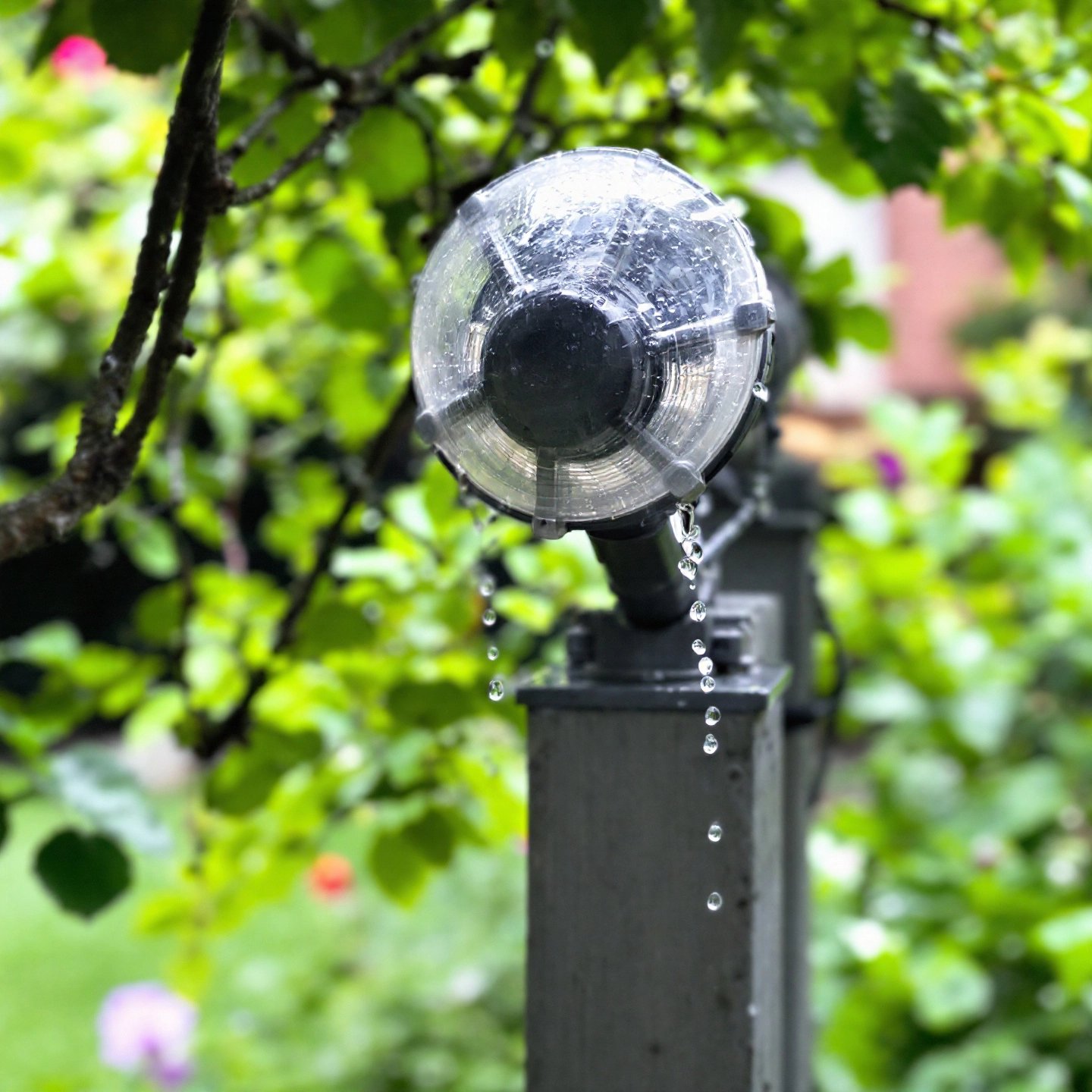
Ensuring Weatherproof Illumination in Outdoor Environments
When you’re planning to light up the outdoors, one critical factor to consider is the weather. Whether it’s rain, snow, or dust, harsh environmental conditions can affect the performance and longevity of your lighting setup. This is where waterproof 12 volt LED lights come into play, offering reliable outdoor lighting solutions that withstand the elements.
The Need for Waterproof Lighting Solutions
Imagine hosting a garden party or simply enjoying a quiet evening on your patio, only to have your lights fail due to unexpected rain. Sounds frustrating, right? Waterproof 12 volt LED lights are designed to prevent such scenarios, ensuring continuous illumination regardless of weather conditions. They are ideal for garden paths, driveways, and outdoor decks, providing both functionality and aesthetic appeal.
These lights are typically rated with an IP (Ingress Protection) code, which indicates their resistance to dust and water. For outdoor use, an IP65 or higher rating is recommended to ensure durability in wet conditions. This rating ensures that your lights can handle water jets from any direction, making them perfect for outdoor installations.
Specialized Solutions: Black Lights for Fishing
In addition to general outdoor lighting, specialized solutions like black lights can enhance your outdoor experiences. For instance, fishermen often use 12 volt black lights to attract fish at night. These lights illuminate the water without spooking the fish, making them an invaluable tool for night fishing enthusiasts.
- Fish Attraction: Black lights emit ultraviolet light, which attracts insects and, consequently, the fish that feed on them.
- Enhanced Visibility: They also improve visibility of fishing lines, making it easier to monitor and manage multiple lines.
Pairing with Solar Power Solutions
For those looking to embrace sustainable energy, pairing your outdoor lighting with solar power solutions is an excellent choice. Renewable Energy Nexus offers a range of solar panels that can seamlessly integrate with 12 volt lighting systems. These panels are designed to reduce carbon footprints and provide a reliable power source for your outdoor lights.
Whether you need portable panels for flexible setups or larger models for maximum efficiency, Renewable Energy Nexus has options like 100-watt, 200-watt, and even 500-watt panels. Their comprehensive kits simplify installation, making it easier than ever to power your lights sustainably. You can explore their solar panel range here.
By choosing weatherproof 12 volt LED lights and pairing them with solar power solutions, you not only ensure reliable illumination but also contribute to a cleaner, greener environment. As we continue, the next section will focus on optimizing interior lighting for RVs, providing comfort and efficiency on the road.
Choosing the Best Interior Solutions for RV Comfort
When you’re on the road, your RV is more than just a vehicle—it’s your home away from home. As such, the interior lighting plays a crucial role in ensuring comfort and functionality. The right 12 volt RV light fixtures can transform your mobile living space into a cozy and well-lit environment, enhancing both safety and aesthetics.
The Importance of Consistent Illumination
Consistent and effective RV interior lighting is essential for several reasons. It not only enhances visibility and safety but also contributes to the overall ambiance of your space. Imagine preparing a meal or reading a book under inadequate lighting—it’s not ideal. That’s why selecting the right light fixtures is crucial for creating a comfortable and functional environment.
RV interior lighting often relies on 12 volt systems due to their energy efficiency and safety. These systems are designed to operate on a lower voltage, reducing the risk of electrical hazards. Moreover, 12 volt lights are compatible with solar panels and battery systems, making them ideal for off-grid adventures.
Comparing Fixture Designs and Features
Choosing the right fixtures involves considering various factors, including design, wattage, and mounting methods. Here’s a comparative look at some popular options:
| Fixture Design | Wattage | Mounting Method |
|---|---|---|
| Recessed Ceiling Lights | 3-5 watts | Flush-mounted |
| Adjustable Reading Lights | 2-4 watts | Wall-mounted |
| LED Strip Lights | 5-7 watts per meter | Adhesive-backed |
Recessed ceiling lights are excellent for general illumination, providing a sleek and unobtrusive appearance. Adjustable reading lights are perfect for focused tasks, offering flexibility in directing light where it’s needed most. Meanwhile, LED strip lights add a touch of modernity and can be used to highlight specific areas, such as under cabinets or along the ceiling.
When selecting fixtures, consider the specific needs of each area within your RV. For instance, brighter lights might be necessary in the kitchen and bathroom, while softer, dimmable options are suitable for living and sleeping areas.
Optimizing Your RV Lighting Setup
To maximize the effectiveness of your RV lighting, consider these tips:
- Layered Lighting: Combine different types of fixtures to create a layered lighting effect, enhancing both functionality and ambiance.
- Energy Efficiency: Opt for LED fixtures, which offer significant energy savings and longer lifespans compared to traditional bulbs.
- Smart Controls: Incorporate dimmers and smart controls to adjust lighting levels and create the desired mood.
- Regular Maintenance: Clean fixtures and replace bulbs as needed to maintain optimal performance.
By carefully choosing and arranging your 12 volt RV light fixtures, you can create a comfortable and inviting space that enhances every moment on the road. As we continue, the next section will provide practical tips for lighting campers and motorhomes, ensuring you have all the insights needed for a well-lit journey.

Practical Tips for Camper and Motorhome Lighting
When it comes to lighting your camper or motorhome, the right setup can make all the difference in creating a cozy and functional living space on the road. Whether you’re embarking on a weekend getaway or a cross-country adventure, 12 volt camper lights offer an energy-efficient solution that ensures comfort and convenience. Let’s explore some practical tips for planning and optimizing your lighting setup.
Planning Fixture Placement Based on Size
One of the first steps in designing your camper’s lighting system is to consider the size and layout of your vehicle. A well-thought-out lighting plan can enhance the functionality and ambiance of your space. Here are some key considerations:
- Assess Your Space: Begin by evaluating the different areas within your camper, such as the kitchen, dining area, sleeping quarters, and bathroom. Each of these spaces will have unique lighting needs.
- Layer Your Lighting: Use a combination of ambient, task, and accent lighting to create a layered effect. For example, overhead LED panels can provide general illumination, while adjustable reading lights offer focused lighting for specific tasks.
- Optimize Fixture Placement: Place fixtures strategically to maximize light coverage and minimize shadows. Consider under-cabinet lighting in the kitchen and LED strips along the ceiling or floor for added visibility.
Embracing Off-Grid Lighting Solutions
For those who love venturing off the beaten path, off-grid lighting solutions are essential. By incorporating solar power, you can enjoy reliable illumination without relying on external power sources. Here’s how Renewable Energy Nexus can help:
- Portable Solar Panels: Renewable Energy Nexus offers a range of portable solar panels that are perfect for campers and motorhomes. These panels can be easily set up to capture sunlight during the day, providing a sustainable power source for your 12 volt lights.
- Complete Solar Kits: For a hassle-free installation, consider their complete solar kits, which include everything you need to get started. These kits are designed to simplify the process, allowing you to focus on enjoying your travels.
- Flexible and Efficient Options: Choose from a variety of panel sizes, such as 100-watt or 200-watt models, to suit your energy needs. These panels are designed to be lightweight and durable, making them ideal for mobile setups.
By integrating solar panels into your lighting system, you not only reduce your carbon footprint but also gain the freedom to explore remote locations without sacrificing comfort.
Maintaining Your Lighting System
To ensure your lighting system remains in top condition, regular maintenance is key. Here are some tips to keep your 12 volt lights functioning efficiently:
- Regular Cleaning: Dust and clean your fixtures regularly to maintain optimal light output.
- Check Connections: Periodically inspect wiring and connections for signs of wear or damage, ensuring that everything remains secure and functional.
- Monitor Battery Levels: If using solar power, keep an eye on battery levels to ensure you’re capturing and storing enough energy for nighttime use.
With these practical tips and the innovative solutions from Renewable Energy Nexus, you’ll be well-equipped to create a well-lit, energy-efficient camper or motorhome. Ready for your next adventure? Let’s move on to explore maintenance strategies for long-lasting 12 volt systems in the next section.
Maintenance Strategies for Long Lasting 12 Volt Systems
Ensuring the longevity of your 12 volt lighting system requires regular maintenance and attention to detail. By implementing routine checks and care, you can maximize the lifespan of both bulbs and fixtures, ensuring consistent performance and reliability. Let’s explore some essential strategies for maintaining your 12 volt system.
Cleaning Connectors and Checking Wiring
One of the most critical aspects of 12 volt system maintenance is keeping connectors clean and ensuring wiring is intact. Over time, dust, dirt, and corrosion can accumulate, leading to poor connectivity and reduced efficiency. Here’s how you can address these issues:
- Regular Cleaning: Turn off the power before cleaning. Use a soft brush or cloth to remove dust and debris from connectors and fixtures. For stubborn grime, a mild soapy solution can be used, but ensure everything is thoroughly dried afterward to prevent moisture-related problems.
- Inspect Wiring: Periodically check all wiring for signs of wear, fraying, or damage. Replace any compromised wires immediately to prevent potential electrical hazards.
- Secure Connections: Ensure all connections are tight and secure. Loose connections can lead to flickering lights or intermittent performance.
Extending the Lifespan of Bulbs and Fixtures
To achieve long-lasting lighting solutions, it’s essential to focus on the care and handling of bulbs and fixtures. Proper maintenance can significantly extend their lifespan, reducing the frequency of replacements and ensuring consistent illumination.
- Use Appropriate Bulbs: Choose bulbs that are specifically designed for your fixtures and intended use. For outdoor applications, ensure bulbs are weather-resistant.
- Avoid Overloading Circuits: Ensure that your lighting setup does not exceed the recommended wattage for your system. Overloading can lead to overheating and reduced bulb lifespan.
- Replace Faulty Bulbs Promptly: A single faulty bulb can affect the entire system’s performance. Replace burned-out bulbs immediately to maintain optimal efficiency.
Key Maintenance Steps
Incorporate these key maintenance steps into your routine to ensure your 12 volt lighting system remains in peak condition:
- Monthly Inspections: Conduct regular inspections to identify and address any issues before they escalate.
- Seasonal Adjustments: Adjust your lighting setup according to seasonal changes, such as repositioning outdoor lights to accommodate changing weather conditions.
- Professional Check-ups: Consider having a professional electrician inspect your system annually to ensure everything is functioning correctly and safely.
By following these maintenance strategies, you’ll ensure that your 12 volt lighting system continues to provide reliable and efficient illumination for years to come. As we conclude this guide, let’s summarize the advantages and applications of 12 volt lights and how they can be optimized for sustainable energy solutions.
Harnessing the Full Potential of 12 Volt Lighting Solutions
As we’ve explored throughout this guide, 12 volt lights offer numerous advantages, making them a versatile and energy-efficient choice for a wide range of applications. From residential settings to automotive uses, these lighting systems provide reliable illumination while minimizing energy consumption. Let’s recap the key benefits and applications of 12 volt lights and how they can be optimized for sustainable energy solutions.
Advantages of 12 Volt Lighting
The primary appeal of 12 volt lighting lies in its energy efficiency and safety. Operating at a lower voltage, these lights consume less power, resulting in reduced electricity bills and a smaller carbon footprint. This makes them an ideal choice for environmentally conscious consumers looking to embrace sustainable energy options.
Moreover, 12 volt lights are incredibly versatile. They are compatible with various power sources, including solar panels and batteries, which allows them to be used both on and off the grid. This adaptability extends their use beyond traditional home lighting, making them suitable for outdoor applications, RVs, campers, and even automotive settings.
Ensuring Reliable Illumination Through Proper Installation and Maintenance
To maximize the benefits of 12 volt lighting, proper installation and routine maintenance are crucial. Safe installation practices, such as using appropriate connectors and adhering to manufacturer guidelines, ensure optimal performance and longevity. Regular maintenance, including cleaning connectors and checking wiring, helps prevent issues that could compromise the system’s efficiency.
By following these best practices, you can enjoy consistent and reliable illumination that enhances both the functionality and aesthetics of your space.
Exploring Sustainable Energy Solutions with Renewable Energy Nexus
For those looking to further reduce their environmental impact, integrating 12 volt lights with solar power solutions is a smart choice. Renewable Energy Nexus offers a comprehensive range of solar panels designed to complement 12 volt systems. Whether you’re seeking portable panels for mobile setups or larger models for maximum efficiency, their selection caters to diverse needs.
By choosing Renewable Energy Nexus, you benefit from their commitment to sustainable energy, expert guidance, and high-quality products that support a cleaner, brighter future. You can explore their solar panel offerings here.
In conclusion, the advantages and applications of 12 volt lights are vast and varied. By embracing these energy-efficient solutions and integrating them with sustainable power sources, you can create a well-lit environment that aligns with your values and meets your lighting needs. Whether you’re illuminating your home, vehicle, or outdoor space, 12 volt lighting solutions offer a pathway to a more sustainable and efficient future.
Frequently Asked Questions About 12 Volt Lights
1. How long will a 12V battery run a light?
A 12V battery’s runtime depends on its capacity and the light’s consumption. For example, a 100Ah battery running a 5A light can last about 20 hours.
2. Can I run LED lights from a 12V battery?
Yes, 12V LED lights are designed to run directly from a 12V battery, making them ideal for off-grid and portable lighting applications.
3. Is 12 volts good for LED lights?
12V is excellent for LED lights, offering energy efficiency and safety, especially in low-voltage systems like vehicles and off-grid setups.
4. What are the benefits of using 12 volt lights?
12 volt lights offer energy efficiency, safety, and versatility, suitable for residential, automotive, and outdoor applications, often compatible with solar systems.
5. How do I maintain my 12 volt lighting system?
Regularly clean connectors, inspect wiring, and replace faulty bulbs promptly to ensure your 12 volt lighting system remains efficient and reliable.

